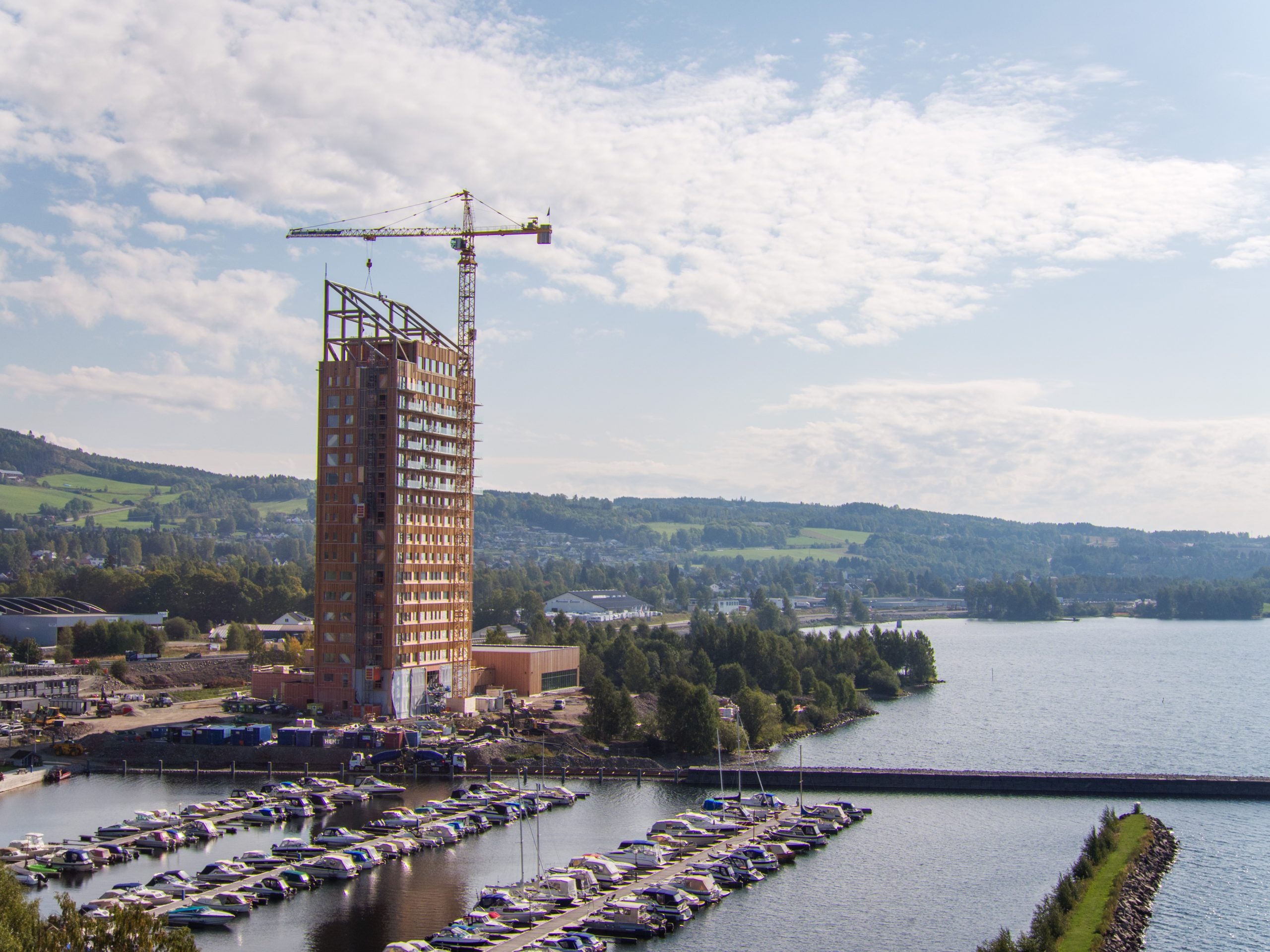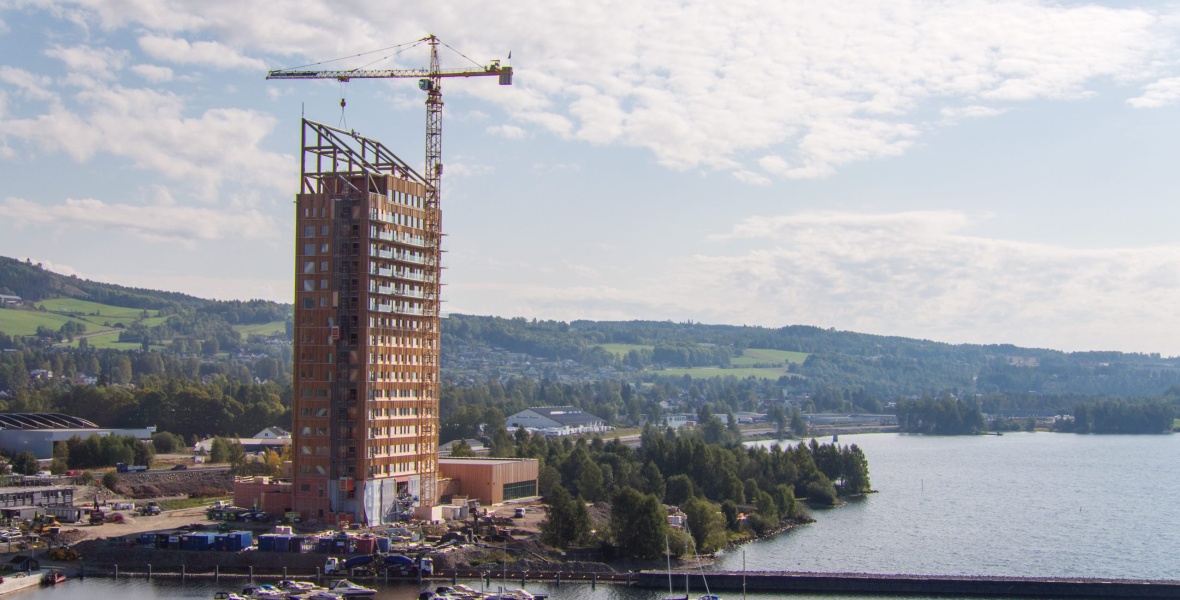Timber buildings reach for the clouds


Timber as the future of construction? Sounds intriguing – and it turns out that this may actually be the case. Buildings made of this material are definitely more environmentally friendly than structures made of cement, concrete and steel. They are healthier and more convenient to use, as well as faster to build. Moreover, timber is renewable – all it takes is to replace each felled tree with at least one newly planted. Timber construction is not limited to single-family houses: even skyscrapers – including their key structural elements – can be made of timber.
The biggest advantages of this type of construction are the low energy consumption and relatively low emissions during the acquisition and transport of timber. Timber is also the strongest building material in relation to its weight, and when properly used, it is very durable. Last but not least, it also has good insulating and acoustic properties, naturally regulates interior humidity and temperature, and – after the application of specialized protection – easily meets fire safety requirements. Today, Scandinavians know best what the benefits of timber construction are and how to go about it.
The world’s tallest timber skyscraper, Mjøstårnet, is 85 meters high and is located in the small town of Brumunddal in southeastern Norway. The building houses apartments, a hotel, restaurants and a swimming pool. The vertical supports, as well as the ceiling and transverse beams, were made of laminated timber (in the Glulam technology), while the elevator shafts and balconies were installed using cross-laminated timber (in the CLT technology). The production of both of these materials uses much less energy than conventional building materials – their use in load-bearing structures reduces emissions by 35 percent up to 85 percent compared to the use of concrete, cement and steel. The impact of this investment on the environment is positive also because in place of each tree used, the developer decided to plant two new ones.












(photos: Mjøstårnet – Moelven press materials)
Timber skyscrapers will continue to climb higher – in a few years, Mjøstårnet will relinquish the title of the tallest building of this type in the world. A new record is expected to be established in 2026, when the construction of the “Rocket & Tigerli” skyscraper in Winterthur, Switzerland, is scheduled to be completed – interestingly, the idea is also Scandinavian, because the project was created by a Danish architectural studio. The building will be 100 meters tall. The skyscraper and the three smaller blocks surrounding it will include, among others, apartments, a student residence, hotel and retail space. In addition, there will be photovoltaic panels and green areas on the roofs of the complex.

(graphic: a visulization of Rocket&Tigerli – Schmidt Hammer Larsen press materials)
Timber will be used to build the structural core and load-bearing system of the skyscraper. The facade will be lined with red and yellow terracotta bricks, which are intended to refer to the colors of the roofs and facades of the surrounding tenement houses. This will be the opposite of superficially sustainable construction, in which structural elements invisible from the outside are made using high-emission technologies, and natural materials are reduced merely to eye-catching aesthetic accents.

(photo: Sara Cultural Center press materials)
Another excellent example of a timber skyscraper whose design fully incorporates green building principles is the Sara Cultural Center in Skellefteå in northern Sweden. The 75-meter-high skyscraper houses six theater stages, a library, two galleries, a conference center and a hotel. This building is also based on glued timber, and uses not only photovoltaic panels, but also artificial intelligence, which monitors energy consumption and predicts energy demand for heating. But that’s not all – the skyscraper can also communicate with surrounding buildings. If it produces excess energy, it can pass it on to its neighbors in need or store it, and when it needs more energy, it can take it from nearby buildings.












Scandinavia is known for timber production, so it is no wonder that the transport of this material takes place over short distances and does not cause significant greenhouse gas emissions. The Sara Center was created from trees cut down within a 60 km radius of the site where it stands, and new ones were planted in their place. However, is timber construction in other parts of the world equally environmentally friendly? The designers of the Swedish skyscraper answer decisively: Yes, absolutely. Their tentative calculations show that the components of the building would have to be shipped around the circumference of the Earth twice to negate the emissions savings from using a natural material instead of cement, concrete and steel. These savings are really significant – in the case of the Sara Cultural Center, there were approximately 90 percent fewer truck deliveries. Additionally, much less garbage and waste is produced on the construction site of a timber building.
The use of timber in construction is beneficial not only with a view to the concern for the environment, but also the efficiency and convenience of the construction process. For example, it took two days on average to build one floor of the Sara Cultural Center. Its creators estimate that building a skyscraper using conventional technologies and materials would take up to a year longer. Construction workers themselves also benefit from the use of timber, because it makes the construction site quieter, calmer and healthier.
Timber-based construction (not necessarily on such a large scale) is, contrary to appearances, not only a tradition, but also the future. All the more so because concrete, cement and steel may significantly lose their popularity due to rising prices and EU regulations on the carbon footprint and energy efficiency of buildings. There is no shortage of inspiration for using timber in construction, so let’s use it.
(illustration photo: Mjøstårnet – Moelven press materials)